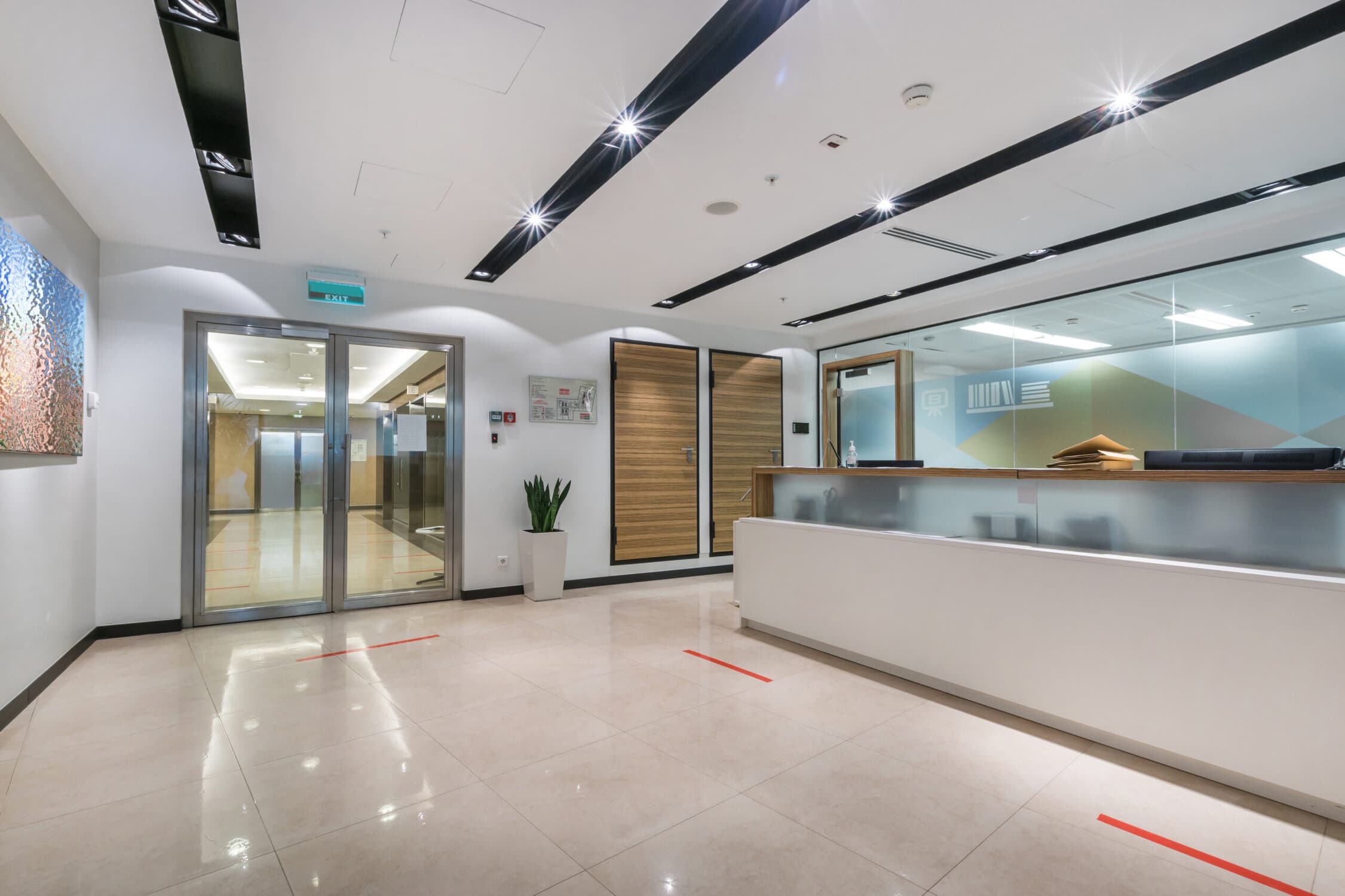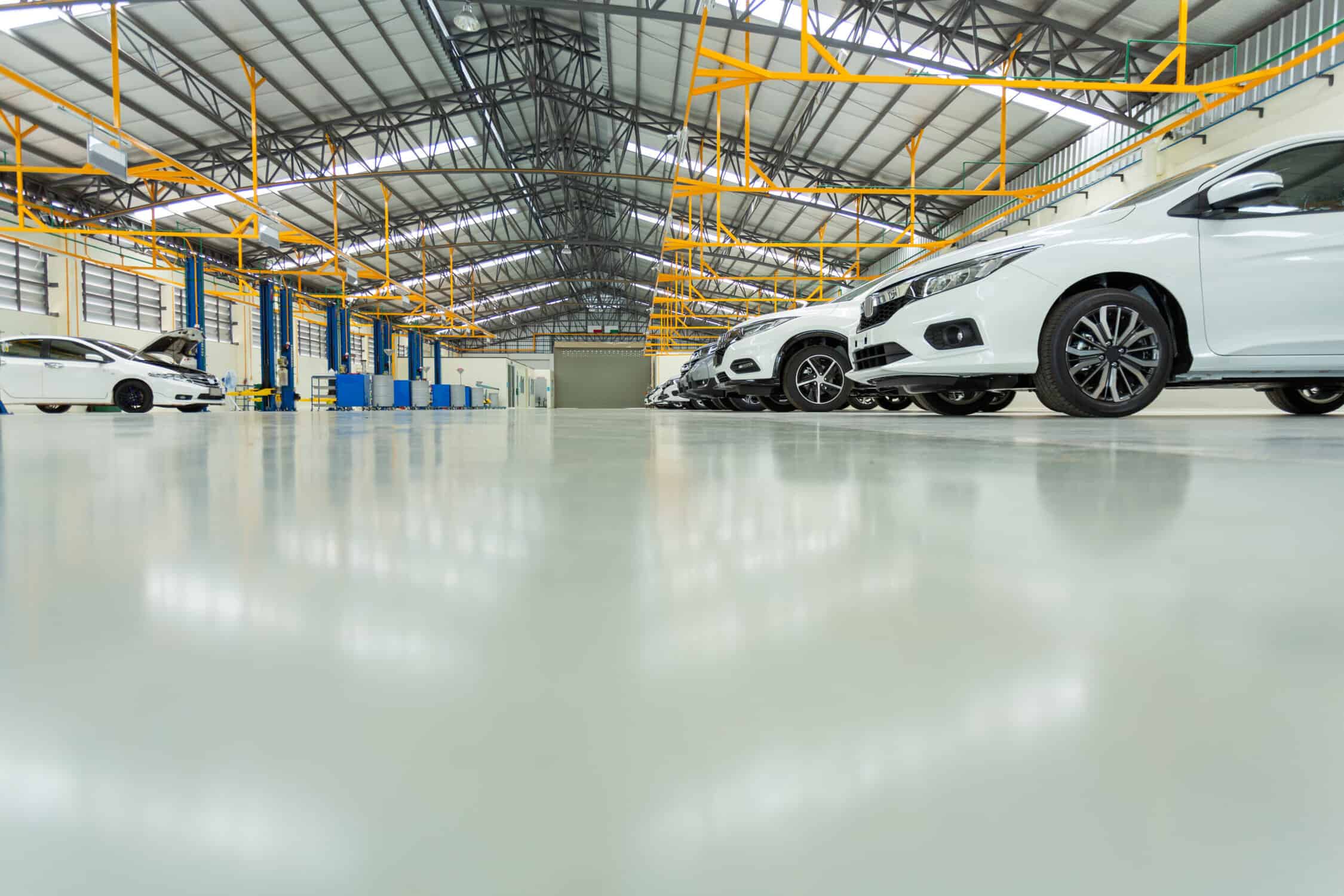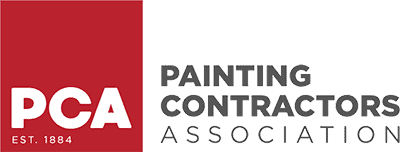Paint has evolved from simple color to an advanced building technology. Today’s paint tech delivers performance innovations—durability, cleanability, health compliance, branding consistency, even environmental responsiveness. Commercial spaces require more than décor: they demand coatings engineered to resist scuffs, microbes, odors, and regulatory scrutiny.
This guide explores modern paint solutions for retail, healthcare, hospitality, offices, and more—delivering product-focused, technical insight for savvy business owners and facilities teams.
The Evolution of Paint Technology
From Aesthetic Layers to Functional Coatings
A decade ago, paint’s role ended at aesthetics. Now, walls and floors serve multiple functions: they repel bacteria, resist wear, reduce cleaning frequency, and support branding. Paint is no longer passive, it’s an integrated surface system.
What Drives Innovation
Efficiency demands, regulatory shifts, and evolving expectations propel paint tech forward. LEED and WELL codes push low-VOC and durable finishes. Health venues require antimicrobial surfaces. And operational pressures drive demand for coatings that cure quickly and resist abrasion.
Core Technological Advances
What’s changed in how paint works:
-
Nanoparticle-reinforced films deliver ultra-tough, self-cleaning surfaces.
-
Microbicidal additives actively inhibit pathogens.
-
Zero-VOC formulations support indoor air quality.
-
Smart coatings (magnetic, writeable, chromatic) enable interactive environments.
-
Self-healing and abrasion-resistant finishes stand up to heavy use.
These aren’t gimmicks—they are engineered for impact.
High-Performance Paint Categories for Commercial Use
Antimicrobial and Microbicidal Paints
These coatings provide continuous pathogen protection. Paint Shield® (Sherwin-Williams) is EPA-registered to kill 99.9% of pathogens including MRSA and E. coli. Ben Moore’s SCUFF-X® adds similar microbial defense along with scuff and stain resistance—ideal in schools, clinics, and high-touch zones.
Health-driven environments benefit most from antimicrobial coatings—restrooms, exam rooms, fitness centers, childcare spaces. Their active protection reduces microbial load between cleanings.
Low and Zero-VOC Formulas
Commercial paints must balance odor, indoor air quality, and safety. Zero-VOC formulas like Behr Premium Plus and Dunn-Edwards EVEREST® eliminate off-gassing, improving occupant comfort. They also support LEED scorer criteria. These coatings offer smooth finishes without compromising environmental standards or coverage.
Scuff-Resistant and Durable Paints
High-traffic areas are walls against everyday wear—shopping center corridors, classroom halls. SCUFF-X® survives over 1,000 cycles on ASTM D2486 scrub tests. PPG Break-Through!® dries in minutes, offering rapid restoration. These coatings protect high-use vertical surfaces while minimizing downtime.
Self-Cleaning and Stain-Resistant Finishes
Nanotechnology creates ultra-tough finishes. Dulux Sterishield Diamond Matt repels stains, making surfaces easy to wipe clean. In hospitality and food areas, this minimizes labor and maintains fresh looks under heavy use.
Paint as a Tool for Health, Safety & Compliance
Addressing Health & Regulatory Needs
Commercial environments must meet health codes and standards. Restrooms, kitchens, and back-of-house zones use mold- and mildew-resistant coatings to avoid microbial growth. In clinics, HVAC and waiting rooms benefit from microbicidal paints.
ADA, OSHA, and Color Requirements
Paint tech supports visual design standards like ADA contrast ratios and OSHA striping. Coatings applied to ensure accessible navigation while complying with fire and safety marking standards. Modern formulations make consistent, code-compliant painting simpler.
Earning Green Building Points
LEED and WELL systems value low-VOC finishes. Project teams can gain credits if they document EPDs, ensure odor-free interiors, and use innovation credits for antimicrobial coatings. Paint becomes a strategic element in achieving certification.
Smart Paints and Forward-Looking Technologies
Color-Changing Paints
Thermochromic coatings shift with temperature. In signage or pathway elements, they serve as dynamic alerts—from ambient heat in public spaces to branding that changes based on environment.
Paint with Sensing Capabilities
Emerging technologies embed moisture- or strain-sensitive particles in paint. Early trials show promise in structural monitoring, leak detection, and indoor climate feedback. Future smart coatings could stream data directly from walls to facility managers.
Magnetic & Writable Surfaces
Writable and magnetic walls transform offices and educational environments. IdeaPaint CREATE® allows dry-erase use, while magnetic primers serve as flexible canvases for interactive design. These technologies support collaboration and engagement, not just decoration.
Sustainability and Eco-Conscious Formulas
Traditional vs. Green Paint
Conventional coats emit VOCs and contribute to landfill via overspray and waste. Environmental regulations push for responsible choices.
Biobased & Sustainable Options
-
ECOS Paints: truly plant-based and zero-VOC
-
Clare Paint: offers safe tinting and low odor
These brands reduce environmental impact and delivery sustainable alternatives for environmentally conscious businesses.
Circular Paint Economy
Innovative programs like Loop allow returning unused paint for recycling. This helps reduce waste and supports a closed-loop model—novel within paint tech.
Application Efficiency and Labor Savings
Faster Dry Times
Quick-dry systems reduce downtime. PPG Speedhide Zero applies one coat, dries within 2 hours, and is ready for fast turnover. These solutions help extend business hours during renovations or upgrades.
Sprayable & Self-Leveling Coatings
Spraying large areas with minimal brush marks improves efficiency and aesthetics. Self-leveling wall coatings eliminate streaks and patchiness, ideal for open offices and ceiling applications where consistency is key.
Reduced Surface Prep
Advances in adhesion and primer technology mean coatings like multi-surface primers eliminate sanding on sound surfaces—especially valuable in large rollouts and build-outs, cutting time and dust exposure.
Custom Coatings and Branding Integration
Branded Color Tints
Franchise environments benefit from precise, repeatable color using tinting systems with brand libraries. Manufacturers support these programs, ensuring consistency globally.
Textured & Faux Finishes
Paint tech now includes metallics, suede, or bespoke chalkboard finishes—even simulated concrete or stone textures—used to create brand-appropriate atmospheres in hospitality and retail spaces.
Spatial Design Tools
Paint can zone open offices or guide traffic flow through color cues. Strategically painted areas help subtly direct behavior and reinforce brand identity using advanced paint systems.
Solving Common Business Concerns With Paint Tech Solutions
| Business Challenge | Paint Tech Solution | Example Product |
|---|---|---|
| Walls that get marked or scuffed | Scuff-resistant coatings | Benjamin Moore SCUFF-X® |
| Odor disruption during painting | Zero-VOC, fast-dry paint | Behr Premium Plus Zero-VOC |
| High cleaning costs | Self-cleaning stain-resistant paint | Dulux Sterishield |
| Brand color variation | Precision tint matching service | Sherwin-Williams custom tint |
| Infection control concerns | EPA-registered antimicrobial paint | Sherwin-Williams Paint Shield® |
These pairings highlight how paint options solve real operational problems, combining technical performance with practical outcomes.
When to Upgrade Your Commercial Paint System
Several indicators suggest it’s time for paint tech modernization:
-
Walls show wear, mold growth, or frequent staining.
-
Compliance codes have updated.
-
Brand refresh requires new visuals.
-
Repainting is already scheduled; why not optimize performance?
Upgrading to advanced coatings while doing routine paint service saves time and future maintenance.
Professional Insight from Commercial Painters
Commercial painters emphasize that while direct-to-wall paint tech is evolving, craftsmanship still matters. All these coatings require proper substrate prep. Even zero-VOC products can fail on dusty, uneven walls. Contractors recommend:
-
Moisture and pH tests before application
-
Priming systems aligned to project use
-
Verifiable data about scrub resistance, VOC, and service history
Wrong paint tech can compound problems. Expert selection makes the difference between a successful upgrade and an expensive redo.
Conclusion
Paint has transcended color—it’s now a functional technology. Smart paint tech enhances health, durability, branding, and compliance. Strategic paint choices protect investments, improve operations, and support company reputation.
What to do next:
-
Book a free facility paint audit, with product spec matching
-
Schedule your annual audit to track surface performance and repaint timing
Paint is your space’s first line of defense—equip it with the best technology for results that last.




